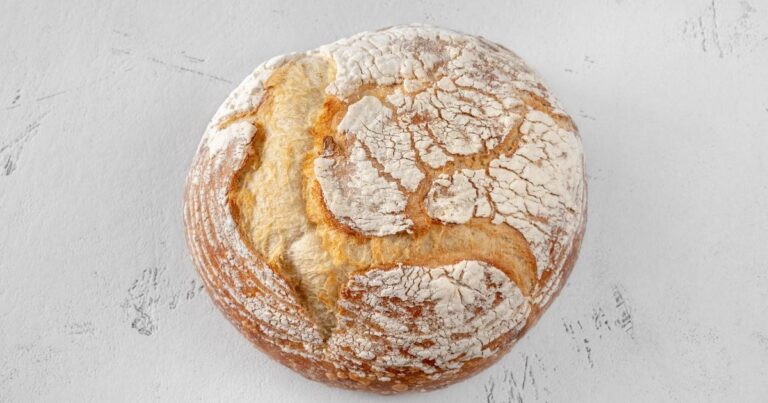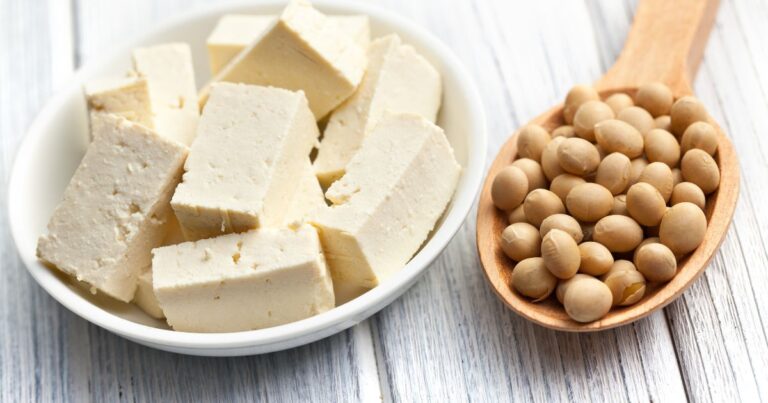Path To Pepperoni Pizza: Born In Italy or an American Dream?
Most might assume pepperoni was born and raised in a small Italian butcher shop and spread worldwide, but the pepperoni origin story might surprise you. Pepperoni has a special place in many’s hearts (and stomachs). But have you ever paused mid-bite and wondered, “Where does pepperoni come from?” It has to come from small Italian butcher shops in quaint Italian towns.

That spicy, tangy topping has found its way onto countless pizzas and into the hearts of food lovers worldwide. It’s hard to imagine a pizza menu without this ubiquitous ingredient, isn’t it?
It would make sense for pepperoni pork to have been around since Italian butcher shops began. But that isn’t the case here. You won’t find pepperoni pork beside the olive oil and chicken parmesan in the history books.
Is it an authentic Italian cured meat creation or an American innovation?
Spoiler alert: the answer might surprise you!
You’re not alone in this savory curiosity. As a food writer and professional chef who has diced, sliced, and savored more pepperoni than I can count, I’m here to take you through the authentic history of pepperoni.
Pepperoni’s story is as layered as the finest salami. We’ll slice through the myths, spice up the facts, and discover how this meaty marvel became a global sensation.
So, let’s not just stand here with our mouths watering – find out what makes this Italian American creation the irresistible star of the culinary world.
Table of Contents
Where Does Pepperoni Come From?

You see, pepperoni isn’t just a pizza topping at your local pizza hut; it’s a tale of cultural convergence, a story of an ingredient that traveled continents and transformed along the way. Have you ever wondered does pepperoni go bad at all or where exactly does it come from? Well, grab a slice, and let’s unfold the flavorful mystery of these spicy salamis – from its European ancestry to its American reinvention.
The Origins of Pepperoni
Pepperoni’s tale is a savory saga that begins not in the rolling hills of Italy but on the bustling streets of early 20th-century America. This spicy sausage, renowned for its vivid bright red hue and smoky flavor, marks a divergence from traditional Italian salami, carving out its unique niche in the culinary world.
A Twist of American Ingenuity: The birth of pepperoni is a testament to the innovation of Italian-American immigrants. They blended the old-world techniques of Italian charcuterie with the bold flavors favored in the New World. This fusion gave rise to a distinctly different sausage from its Italian ancestors.
European Ancestry: The roots of pepperoni dry sausage can be traced back to the ancient European tradition of curing meats. The name ‘pepperoni’, a nod to ‘peperone’ – the Italian word for bell pepper, hints at its piquant nature, a step up in heat from its Italian counterparts.
In a way, the creation of pepperoni was an act of culinary improvisation, a blend of tradition and adaptation, an emblem of the melting pot that was – and still is – America.
Pepperoni in Italy: A Comparison
While pepperoni is a household name in the U.S., its status in Italy is quite different. Here’s a look at how this American creation compares to traditional Italian cured meats:
Italian Cousins: The closest relatives to pepperoni are salami like ‘salame piccante’ in Italy. However, these meats differ significantly in taste, texture, and preparation. Italian salamis are often more varied in flavor, with regional recipes playing a significant role.
Spice Profile: One of the most notable differences is the spice blend. Italian cured meats often use a mix of spices, including fennel and garlic. In contrast, pepperoni typically leans heavily on paprika and chili pepper, giving it that distinctive kick and red color.
Texture and Process: The texture of pepperoni is also distinct. It tends to be softer and has a finer grain than its Italian counterparts, which can be coarser and are usually air-dried for longer periods.
This contrast illuminates how pepperoni pizza, inspired by Italian tradition, has evolved to suit American tastes and ingredients, creating a product that is familiar and uniquely different from its Italian ancestors.
The Birth of American Pepperoni
The journey of pepperoni in the United States is a fascinating slice of culinary history, intertwining with the evolution of American pizza.
Italian-American Roots: The story of American pepperoni begins with Italian immigrants bringing their cherished food traditions to the new world. In the early 20th century, these immigrants started adapting their recipes to the ingredients and tastes of America, giving birth to a spicier, more vibrant sausage – the pepperoni we know today.
Rise with Pizza: Pepperoni’s rise to fame is closely linked to the growing popularity of pizza in the United States. As pizza transformed from an ethnic delicacy to a national favorite post-World War II, pepperoni emerged as a top topping choice, beloved for its robust flavor and perfect pairing with cheese and tomato sauce.
A Symbol of Innovation: The widespread love for pepperoni on pizza symbolizes the broader story of American culinary innovation. It reflects how immigrant cuisines have been adapted and reimagined, leading to new, uniquely American foods.
Pepperoni, Bell Pepper, and Pizza: A Perfect Pairing
The story of pepperoni is incomplete without discussing its role as the go-to topping for American pizza. This pairing has become so iconic that it’s hard to imagine most pizza orders one without the other.
A Match Made in the Oven: Pepperoni’s oily and spicy characteristics make it the perfect complement to a pizza’s gooey cheese and tangy tomato sauce. When cooked, pepperoni curls into delightful, crispy-edged cups holding its rendered fats, adding an extra layer of flavor.
Popularity Surge: The post-World War II era saw a surge in pizza’s popularity in the United States. Alongside this pizza boom, pepperoni gained a foothold, quickly ascending to America’s favorite topping. Its easy availability, long shelf life, and bold flavor contributed to its rise.
Cultural Icon: Over time, pepperoni pizza has become more than just a menu item; it’s a cultural icon. It’s the go-to for parties, late-night snacks, and comfort food cravings, epitomizing the American twist on the classic Italian dish.
The Global Spread of Pepperoni
Pepperoni’s journey from an American innovation to a global sensation is a testament to its universal appeal. Here’s how this spiced sausage won hearts and palates around the world:
Crossing Borders: As American culture, particularly fast food and cinema, spread globally, so did the love for pepperoni. Its association with pizza, an internationally loved dish, propelled its popularity across continents.
Adaptation and Variation: Different countries have embraced pepperoni, adapting it to their local tastes and cuisines. In some places, it’s spicier, while in others, it might be milder. This versatility has played a key role in its widespread appeal.
The Universal Language of Pizza: Pizza, often considered a universal language of food, has been a significant vehicle for pepperoni’s global reach. The combination of pepperoni pizza has become a familiar and beloved choice in many countries, transcending cultural and culinary barriers.
Pepperoni’s global popularity reflects its ability to blend into different culinary landscapes, making it not just an American or Italian food ingredient but a truly international one.
Modern Production and Variations
The world of pepperoni today is as diverse as its history. Let’s explore how pepperoni is made now and the different variations that have emerged:
Traditional Meets Modern: Modern pepperoni is typically made from a mix of pork and beef, seasoned with paprika or other chili pepper-based spices for that characteristic heat. The curing process, rooted in traditional methods, has been adapted to modern production techniques, balancing efficiency with flavor development.
Artisanal vs Industrial: There’s a spectrum in pepperoni production. Artisanal producers focus on traditional, slow-curing methods, often using locally sourced meats and handcrafted spice blends. In contrast, industrial production prioritizes consistency and volume, using advanced curing techniques and standardized recipes.
Variations Galore: Today’s market offers a variety of pepperoni types to cater to different dietary needs and taste preferences. This includes:
Turkey Pepperoni: A leaner, lighter alternative made from turkey.
Vegan Pepperoni: Plant-based versions using ingredients like soy protein or mushrooms, catering to vegetarians and vegans.
Regional Flavors: Some producers incorporate unique local spices or preparation methods, adding regional twists to the classic pepperoni flavor.
The evolution of the history of pepperoni production and its variations reflect advancements in food technology and consumers’ changing preferences and values, showcasing the dynamic nature of this beloved sausage.
Conclusion: A Fusion Favorite
As we wrap up our journey through the spicy, savory world of pepperoni, it’s clear that this beloved sausage is much more than just a pizza topping. It’s a symbol of culinary fusion, embodying the blending of Italian tradition with American innovation.
More Than Just a Topping: Pepperoni has transcended its role as a mere ingredient to become a centerpiece in the cultural and culinary exchange narrative. Its story is a delicious testament to the creativity and adaptability of immigrant communities, particularly Italian-Americans, who reimagined the flavors of their homeland to craft something new and exciting.
A Culinary Chameleon: The evolution of pepperoni, from its American roots to its global presence, highlights its versatility and universal appeal. Whether on a classic New York slice, a gourmet charcuterie board, or a vegan pizza, pepperoni uniquely brings people together.
An Ongoing Legacy: The popularity and variations of pepperoni reflect our ever-changing culinary landscape, where traditions are cherished, but innovation is always welcome. It’s a dynamic dance of flavors and cultures, constantly evolving and surprising.
FAQ and Additional Information:
What part of the pig does pepperoni come from?
Pepperoni is typically made from a mix of pork and beef. The pork part usually comes from the shoulder of the pig, also known as the Boston butt or pork butt. This cut is preferred because it has a good balance of meat and fat, essential for creating pepperoni’s characteristic texture and flavor. The fat content is especially important, as it contributes to the sausage’s rich taste and helps maintain moisture during the curing and cooking.
In addition to pork shoulder, some recipes may have beef mixed with ground pork or use other pig parts for additional fat or flavor. Still, the shoulder remains the primary source of pork in traditional pepperoni recipes. The beef used in pepperoni typically comes from leaner cuts, which are combined with the fattier pork to achieve the desired texture and flavor
Does pepperoni exist in Italy?
In Italy, what is known as “pepperoni” in the United States doesn’t precisely exist under the same name or form. The term “pepperoni” itself is an American innovation. However, Italy has a rich tradition of cured meats (salumi), and several Italian sausages resemble pepperoni. Italian food conquered in the Dried Salami realm for years.
The closest Italian equivalents to American pepperoni are:
Salame Piccante: This is probably the closest relative to American pepperoni. It’s a spicy salami commonly found in Southern Italy, particularly in regions like Calabria. The flavor profile and appearance are similar, with a red hue and spicy taste, but the texture and specific spice blend can vary.
Soppressata di Calabria: Another spicy Italian salami, Soppressata from the Calabria region, shares some characteristics with pepperoni, including hot peppers and a similar processing method. However, it usually has a coarser texture and a more complex flavor profile.







